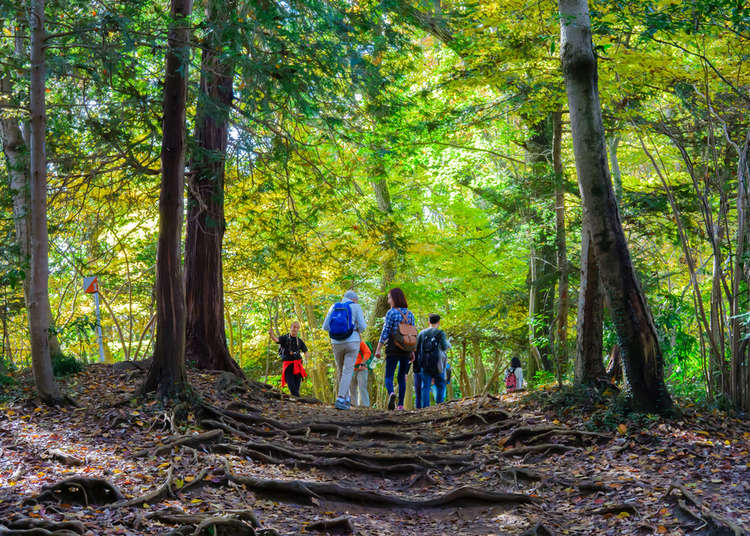
Japan is a beautiful country. With sand dunes, beaches, mountains, and forests, you are sure to fall in love with the great outdoors. And if you’re only planning a trip to Tokyo? No problem! Try shinrin-yoku, the Japanese practice of taking a walk in the forest. Sound familiar? You might recognize it better by its trendy English name: forest bathing. And thanks to Japanese public transportation, you can get out in nature while staying in the city. So, here’s are five of the best hiking trails near Tokyo to try forest bathing!
1. Mount Mitake
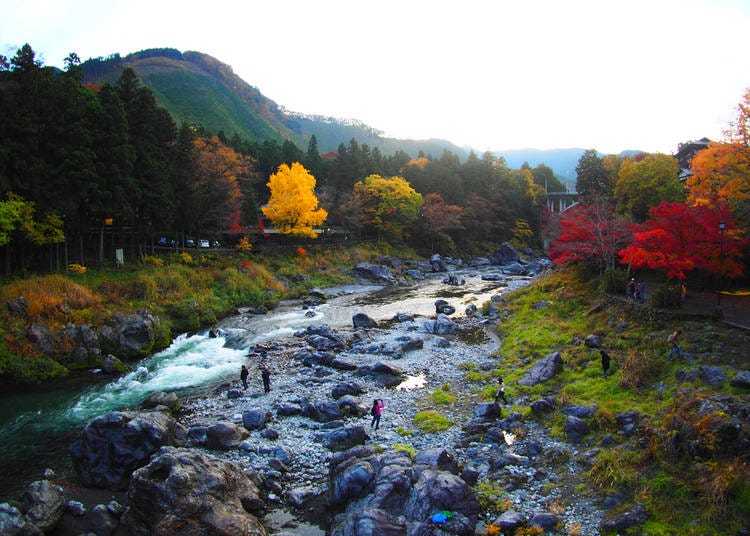
Hiking in Japan? For an ultimate natural beauty, head to this first spot. Mount Mitake is part of Chichibu-Tama-Kai National Park, a park that extends over four prefectures: Tokyo, Saitama, Nagano, and Yamanashi.
Mount Mitake is located in Tokyo Prefecture in what’s known as the Okutama region. This region is known for its beauty, and you’ll have no shortage of that on Mount Mitake, which is home to an abundance of flora and fauna.
Head up the mountain to visit Musashi-Mitake Shrine, a place of mountain worship for thousands of years. Another must-see is the Rock Garden that, ironically, is not a rock garden but a narrow valley. This little Eden has a stream, moss-covered rocks, and a couple of waterfalls nearby.
To get there from central Tokyo, take the JR Chuo Line to Ome and transfer to the JR Ome Line. Get off at Mitake Station. Overall, you’ll want to set aside a full day to get there and hike. Note that the Visitor’s Center is closed on Mondays.
-
Mitake Station御嶽駅
- Address Mitakehoncho, Ome, Tokyo 198-0173
-
Nearest Station
Mitake Station
2. Koburi Pass

Try the Koburi Pass for a hike that’s peaceful and untouched by the hordes of tourists in central Tokyo. This Japan hiking trail takes you along the mountainside and gains about 350 meters in altitude. Places to check out include Suwa Shrine and Ogamiyama.
While you can do this hike year-round, spring is recommended as you’ll be able to enjoy the blossoming flowers in Yugate. Located in Saitama, this hiking trail is easy and cheap to reach.
Take the Seibu Ikebukuro Line to Hanno and transfer to the Seibu Chichibu Line. Get off at Agano Station. The trip costs about half that of the trip to Mount Mitake. Make sure to pack a bento or pick something up in town before leaving!
-
Agano Station吾野駅
- Address 326-1 Sakaishimachibun, Hanno, Saitama 357-0213
3. Mount Takao

Next up on the list is Mount Takao, a popular spot for day hiking near Tokyo for both tourists and locals alike. Aside from a multitude of hiking trails to suit different levels, Mount Takao has plenty to offer, including a monkey park, waterfalls, a shrine, and more!
The Omotesando Trail has wide, paved pathways and is the easiest of the hiking paths. The Biwa Waterfall Trail is also quite accessible, and will take you along a stream to waterfalls where you might get to catch a glimpse of monks undergoing training! Located near the summit of Mount Takao is Yakuoin Shrine and, on a clear day, you can catch views of Mount Fuji from the top! (And if you're not a huge fan of hiking in Japan, you can even take the special train to reach the top of Mount Takao!)
To get to Mount Takao, take the Keio Line Special Express to Takaosanguchi Station. Mount Takao offers stellar views and is particularly beautiful come fall, but make sure to visit on a weekday; it can get extremely crowded on weekends.
-

-
Address
Takaomachi, Hachioji-shi, Tokyo, 193-0844
View Map -
Nearest Station
Takaosanguchi Station (Keio Takao Line)
5 minutes on foot
- Phone Number 042-661-4151
-
Address
Takaomachi, Hachioji-shi, Tokyo, 193-0844
4. Ten-en Hiking Course
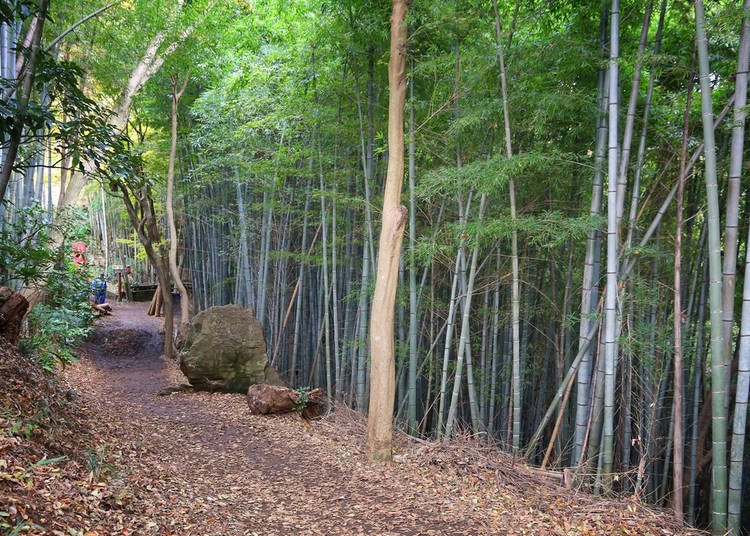
For more under-the-radar hiking in Japan, head southwest of Tokyo to Kamakura. It's the perfect place for day hiking near Tokyo. Here, you can try the Ten-en Hiking Course for some off-the-beaten-path Tokyo travel. This hike connects Kencho-ji Temple and Zuisen-ji Temple and is part of the Kamakura Wildlife Protection Area. On the Ten-en Hiking Course, you’ll cross bamboo groves and valleys. Be on the lookout for tomb caves called yagura along the path. Set on the ridge of the mountains, you’ll also get stunning mountain and sea views.
To get to there, take the Shonan-Shinjuku Line or the Yokosuka Line to Kamakura Station. Then, take the No. 4 bus until the end (Kamakura-gu). Try this hike in fall to see the warm autumnal tones cover the mountainside.
-
Ten-en Hiking Course Trailhead天園ハイキングコース
- Address 729 Nikaidō, Kamakura, Kanagawa 248-0002
5. Mount Tsukuba
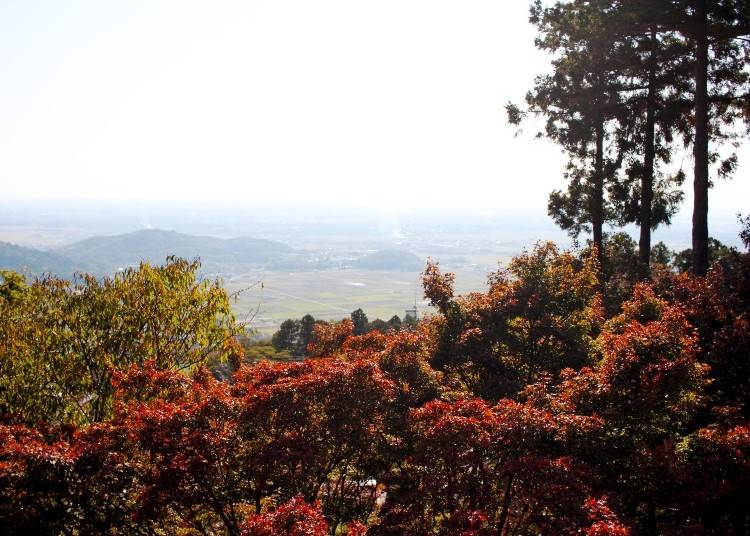
There's an old saying of Nishi no Fuji, higashi no Tsukuba, simply meaning "Fuji in the West, Tsukuba in the East". And whereas Mount Fuji is known for its iconic perfect sloping shape, Mount Tsukuba is known for its twin peaks.
Unlike the others so far, Mount Tsukuba can be found to the Northeast of Tokyo. To get there from Tokyo, simply take the Tsukuba Express line from Akihabara to its terminal, Tsukuba. Then get on the Tsukuba Center bus. Get off at "Tsukubasan Jinja Iriguchi" for the cable car or most direct walking route, or get off at the next stop, "Tsutsujigaoka", for the ropeway and alternate walking routes.
If you want to hike to the top, there are a number of different routes, but the main, simplest one takes 90 minutes. For those of us who simply want to enjoy the scenery, however, there is a cable car (590 yen one way) and a ropeway (630 yen one way). The cable car takes around eight minutes, and the ropeway around six.
At the top you'll find the two peaks, "Nantaisan" and "Nyotaisan". Interestingly, these are known as the male and female peaks, respectively. Praying at Mount Tsukuba is meant to bring luck in relationships, or to help you find a partner! Not only that, but you will also find a rock formation that looks somewhat like a frog at the summit, called gama ishi. If you can throw a small piece of rock into the mouth and get it to stay, it is said to bring you wealth and financial good luck.
It's particularly beautiful in autumn!
-
Mount Tsukuba筑波山
- Address Mount Tsukuba, Tsukuba-shi, Ibaraki-ken, 300-4352
-
Nearest Station
Tsukuba Station (Tsukuba Express Line)
Then take the Tsukuba Center bus:
For cable car and Tsukubasan Shrine (approx. 40 mins), get off at "Tsukubasan Jinja Iriguchi" AKA "Tsukuba Shrine".
For ropeway (approx. 50 mins), get off at "Tsutsujigaoka"
6. Mount Fuji
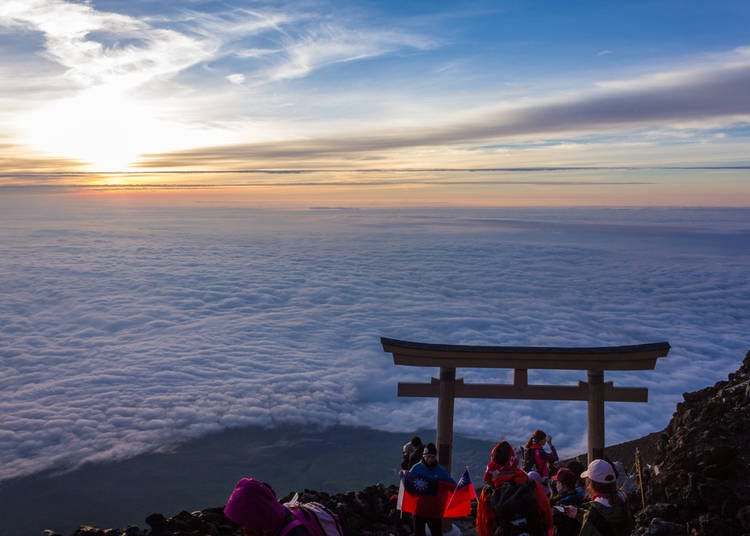
Last, but certainly not least, we have to include Mount Fuji. Easily the most well-known hike in Japan, Mount Fuji is Japan’s tallest mountain, a live volcano, and a once-in-a-lifetime experience. The mountain has 10 stations, with Station One at the base of the mountain and Station Ten at the summit. Most people start climbing at night from Station Five located midway up the mountain to make it to the summit for the sunrise.
The official climbing season is early July to mid-September. At this time, the mountain is free of snow and the mountain huts are open. Because of this, it can get extremely crowded—especially on weekends.
The shoulder season (late June and late September) can see sub-zero temperatures and is only recommended for experienced hikers. To get there, buses from Shinjuku are available during the official climbing season. Make sure to dress warm and in layers!
-

-
Address
Fujiyoshida-shi, Yamanashi, 403-0000
View Map -
Nearest Station
Gotemba Station (JR Gotemba Line)
-
Address
Fujiyoshida-shi, Yamanashi, 403-0000
Nature is deeply connected with Japanese culture, and for good reason: You can forest bathe in bamboo groves, explore hidden valleys, view the city from the top of a volcano! Whether you’re an avid hiker or total beginner, Japan has a hiking trail for you. Try one of these spectacular hikes and see another side of Japan.
Related Articles on Hiking in Japan
- Area
- Category
*Prices and options mentioned are subject to change.
*Unless stated otherwise, all prices include tax.
Popular Tours & Activitiess
Recommended places for you
-

The Best Japanese Food Representing 2025! 'Dish of the Year®' Annual Award Results Announced
-

Enjoy Japan's Gorgeous Winter Lights! Ride the Romancecar to Shonan no Hoseki Illumination
by: Guest Contributor
-

New Seibu L00 Series Launching in 2026! What to See Along the Tokyo-Area Golden Route
by: Guest Contributor
-

A Travel Game Changer! Go Hands-Free Between Tokyo and Kyoto with LUGGAGE EXPRESS by JTB and JR Tokai
by: Guest Contributor
-

Tokyo City Pass Upgrade: Harry Potter Studio Tour & Top Sights up to 85% Off
by: Guest Contributor
-

Keisei × Keikyu 16-Temple Goshuin Tour: Discover Deeper Tokyo & Yokohama
by: Guest Contributor
Inspiration for Accommodations
-

Enjoy Mt. Fuji from the Comfort of Your Room! Recommended Ryokan with Mt. Fuji View
-

Stay Near the Cherry Blossoms! Hotels for Cherry Blossom Viewing in Tokyo
-

Family-Friendly Hotels with Free Shuttle to Disneyland: Convenient Access for a Magical Stay
-

Top Ranked Hakone Hotels with Mt. Fuji View: Enjoy Stunning Scenery from Your Private Space
-

Convenient Tokyo Hotels with Airport Shuttle: Ideal for Families and Heavy Luggage
-

Stunning Tokyo Tower View Hotels: Enjoy Spectacular Scenery from Your Private Space
-

Convenient Asakusa Hotels with Kitchens: Ideal for Extended Family Visits
-

Experience Luxury: Hakone's 10 Best Five-Star Accommodations
-

Enjoy Mt. Fuji Autumn Leaves! Top Hotels Near the Popular Autumn Leaves Corridor
-

Experience Hakone Fall Foliage from Your Room with Stunning Views
-

Explore, Eat, Relax - Welcome to the World of Onsen Gastronomy! Travel Japan's countryside, expand your culinary horizons, and soak in sumptuous hot springs
-

Meiji Shrine (Meiji Jingu): Exploring the Sacred Sanctuary of Peace in Bustling Tokyo
-

Autumn in Japan 2025: Fall Foliage Forecast & Where to Enjoy the Colorful Leaves (+Tour Info)
-

Easy Day Trip from Tokyo! Ultimate Sightseeing Guide for Hakone & Lake Ashinoko!
-

6 Surprisingly Cheap Things in Japan
-

What to Pack for Japan: 8 Essential Things for a Hassle-Free Trip
- #best ramen tokyo
- #what to buy in ameyoko
- #what to bring to japan
- #new years in tokyo
- #best izakaya shinjuku
- #things to do tokyo
- #japanese nail trends
- #what to do in odaiba
- #onsen tattoo friendly tokyo
- #daiso
- #best sushi ginza
- #japanese convenience store snacks
- #best yakiniku shibuya
- #japanese fashion culture
- #best japanese soft drinks




















